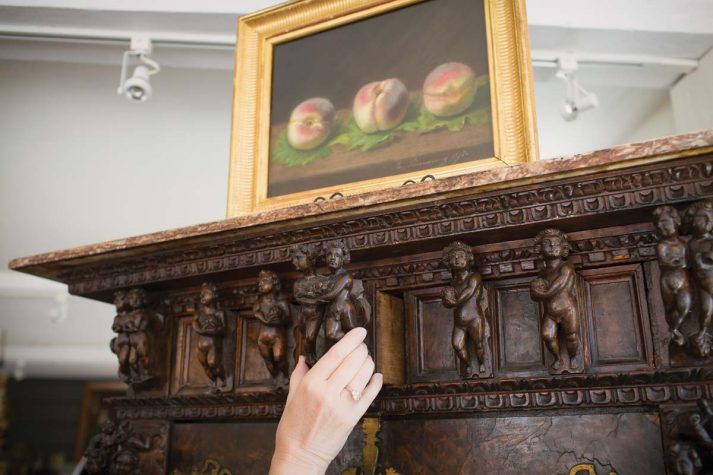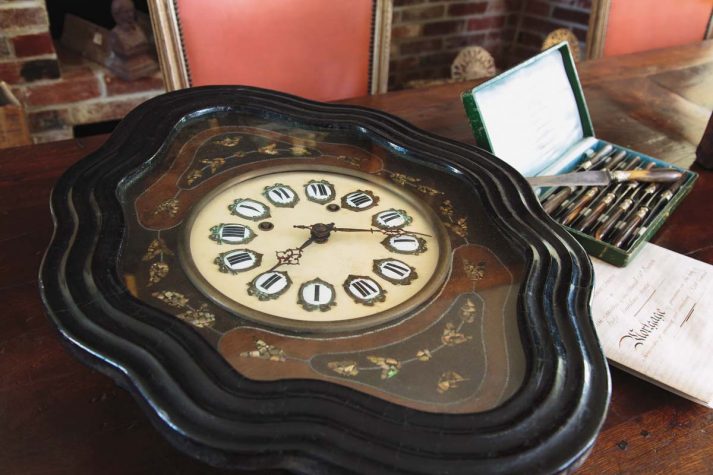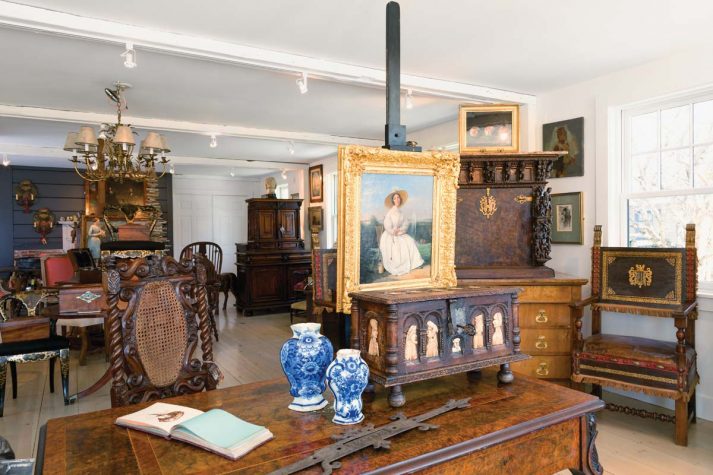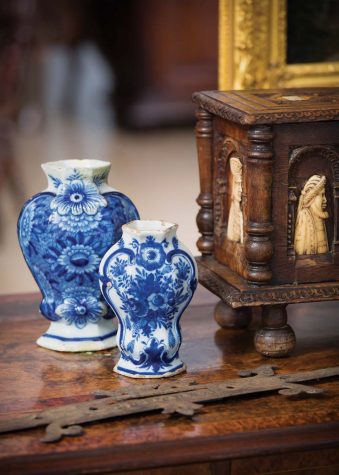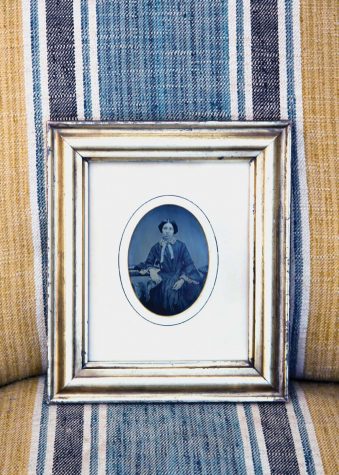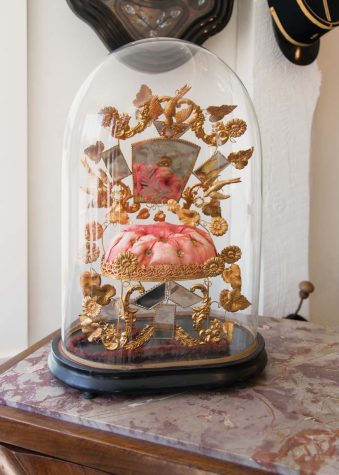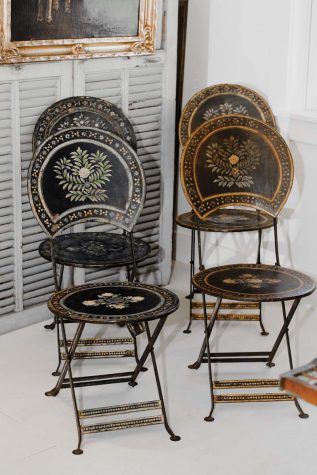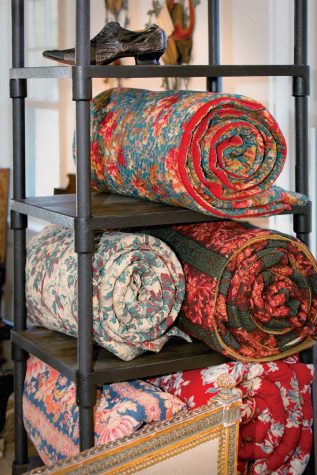In with the Old
A passionate collector turns proprietor at The Art of Antiquing in Round Pond
In the village of Round Pond, where the Fourth of July parade passes through every summer and the Granite Hall Store still sells old-fashioned penny candy, is Margaret Brown’s year-old seasonal antique shop, the Art of Antiquing. Specializing in pieces unearthed from antique emporiums and dealers across Europe, which are then transported across the Atlantic on cargo ships, the store sells all manner of Old World furniture, lighting, paintings, and even architectural elements.
“These are things you can’t find anywhere around here,” says Brown, as she bops around her expertly curated shop like a kid selecting candy in the store down the road. “Customers come in and say, ‘I’ve never seen anything like this before.’” She heads first to the front window, where there are early nineteenth-century wooden crescent moons from northern France that once served as papier- mâché molds for signage (some still bear the original newspaper remnants), then over to a seventeenth-century walnut court desk from Genoa, Italy, which features drawers with their original hardware, and, finally, to a late-eighteenth-century hand-carved walnut buffet deux corps—a “two-body” piece from Lyons, France. “See if you can find its secret compartment—actually, there are two of them,” Brown instructs. In the center of the cabinet, a sculpted lion face is sticking out a sliver of tongue, which turns out to be moveable. Raise it, and out slides a hidden drawer for valuables.
Brown has always been passionate about antiques. Originally from Augusta, she worked in corporate finance before leaving to focus on raising her family. The five of them lived in Connecticut and Boston, but summers were always spent in Pemaquid, near the Chamberlain home her grandfather built in the 1920s. She’d frequently visit the little Round Pond antique shop, and while she always enjoyed the thrill of the hunt—even taking antique recognition and valuation classes abroad—she never imagined running a store. Then two years ago, when she and her husband were living in London and her youngest child was heading off to college, she learned that the shop’s owner was retiring and listing the place for sale.
After a six-month renovation, including expanding retail space to the second floor by exposing the rafters for a modern, lofted barn feel, the shop opened just in time for summer. With white walls and windows on three sides of the store, furniture is easily imagined in any home, no matter if one’s decorating style is contemporary or traditional. And while fine antiques and art are Brown’s mainstay, there are also many affordable pieces under $20, such as vintage ink stamps from France, Victorian eyeglasses from England, and a bone-handle knife from Italy. “I try and make it so that anybody can walk in the store and find something,” says Brown. She pauses for a moment, sitting down on a red metal stool behind a salvaged general store counter, and points to the original bell that still hangs at the far end. “The thing about antiques, and the reason why I love them so much,” she says, “is that everything has a story.”
Margaret Brown on the art of collecting and decorating with European antiques:
- Learn to recognize quality. Look underneath, inside, and behind for any notable imperfections and to see if there’s been a “marriage” of two different pieces, such as an older tabletop affixed to a newer base. Check to see that a piece is all the same type of wood, that its proportions are in harmony, and that all the hardware matches.
- Keep an eye out for special details, such as original hardware and elaborate marquetry. If you look inside a drawer and see holes from an earlier set of pulls, then the hardware is likely not original. When it comes to marquetry, the more intricate and interesting a pattern is and the better its condition, the more valuable the piece is.
- Feel free to combine a new sofa, a pair of Napoleon III chairs, and an early British chest. When it comes to mixing and matching eras and styles, there are no rules.









